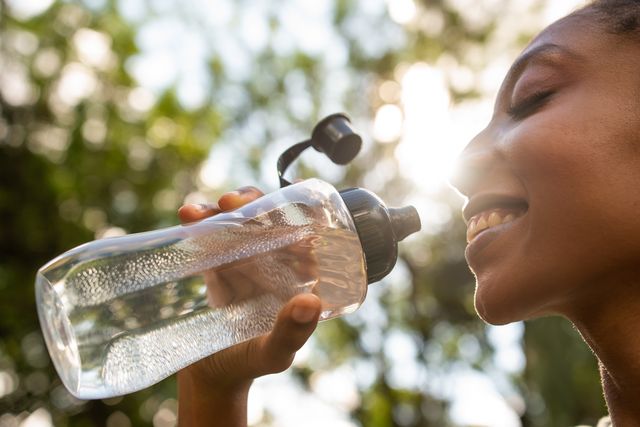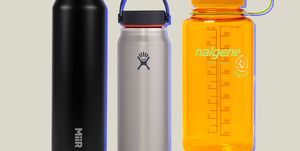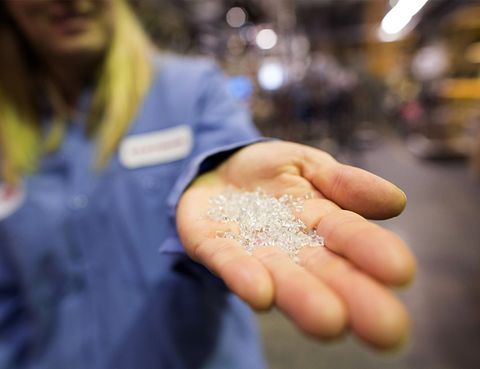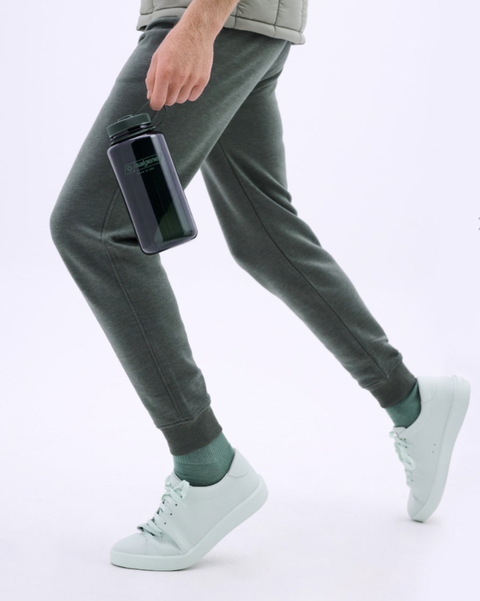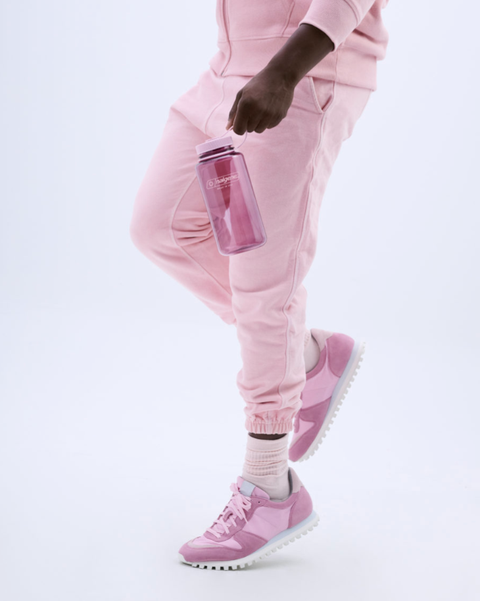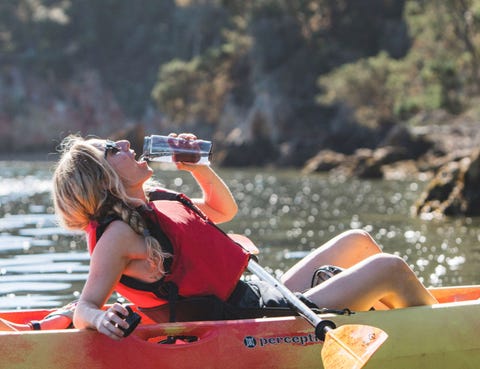I know, know: you’re reading my headline with horror and shock, clutching your vacuum-insulated water bottle, shuddering with rage that one would even dare suggest that plastic water bottles could be anything but deplorable.
But a realized life cannot be lived without facing challenges, and challenges to tightly held ideals can sometimes be moments of learning, not anger at the injustice of it all.
For the record, I love both vacuum insulated and plastic bottles — though, let's be clear, I'm referring of course to the reusable variety. Sometimes insulated water bottles work … too well. We’ve all had that moment when you’ve poured hot coffee in your thermos and can’t drink it for two hours without irreversibly torching your taste buds.
The time of bashing reusable plastic water bottles just because they’re plastic is over. Not only are they perfectly sustainable, they may actually be more so. Still with me? Let's proceed.
Plastic Is Lighter
First up, weight. Let’s compare two water bottles currently on the market: the 32-ounce Nalgene Sustain, and the 32-ounce Hydro Flask Wide Mouth. Nalgene’s bottle is 6.26 ounces without liquid, while Hydro Flask’s option weighs in at 15.2 ounces dry. Add in your liquid, and you’re hauling around quite a bit of weight with the insulated option.
For anyone who considers the weight of what they carry down to the ounce — like long distance runners, ultra light backpackers, or weirdos like me who weigh their gear — the plastic bottle is the clear winner in this category.
Plastic Is Recycled More Often
Reusable plastic water bottles are easier to make out of recycled materials. Let’s revisit the Nalgene Sustain bottle that I previously mentioned: it’s made with Tritan Renew, material derived from 50 percent waste plastic (using ISCC certified mass balance) and recycles the equivalent of eight single-use bottles in its production.
Vacuum insulated water bottles, on the other hand, are made from food-grade stainless steel, (SUS304), that’s been certified to handle beverages. According to manufacturing experts, “SUS304 (18 / 8 food grade stainless steel) is the most widely used as stainless steel, and is used in food equipment, general chemical equipment, atomic energy industry, etc.”
There isn’t much transparency when it comes to the sourcing of stainless steel, or the environment or societal impacts that sourcing that raw material comes with. On the other hand, because plastic has been so vilified in recent years — and rightly so — there is increased transparency when it comes to sourcing and environmental effects attached to creating reusable plastic water bottles.
Plastic Is Tough
Plastic is an incredibly durable material. As you probably know by now, it takes hundreds of years to break down and can hold its form for decades, with the proper care. Plastic should never have been introduced as a single-use material — it’s too capable for that. If you’ve ever dropped your plastic water bottle on a hike, down a ravine, out of a speeding car, you’ll know from experience that while the outside of the bottle may get scratched and rough, that plastic isn’t going to dent.
The same cannot be said of vacuum insulated bottles: to decrease weight, the steel used is incredibly thin, so it can dent from a minor drop. Most dents are just aesthetic, but if it reaches through to the vacuum insulation, your bottle won’t work as effectively, which is a bummer when you’ve paid three times as much for it compared to plastic and have to replace it for a new one.
Plastic Is Clear
It may take you a moment to process this paradigm-shifting reality, but it’s true: unless you are Superman, plastic is easier to see through than stainless steel. This point may seem trivial, but if you’re in a tense or dangerous situation, and you’d like to know just how much water you have at a glance — or if a dang bug happened to take a dip in it when you weren't looking — plastic is the way to go.
Bottles like Camelbak’s Eddy + filtered by Lifestraw 32 ounce bottle is one of my favorites for this reason, and also because like the Nalgene, it’s made with Tritan Renew, rendering it more sustainable. It’s also got an integrated Lifestraw filter, which filters water twice to remove bacteria, parasites, and microplastics, and reduce lead, bad taste, chlorine and other unwanted chemicals. And because it’s made from plastic, you can see the filter at work!
Plastic Is Wallet-Friendly
I’m no advocate of buying products simply because they’re cheaper, but if the item at hand is both capable and price conscious, I consider that a win. If we compare the same volume of bottles across both fields (32 to 40 ounce), it’s clear which material is more affordable.
Let’s take a look at a couple bottle options from the vacuum insulated side of the fence: a 32 ounce Wide Mouth Hydroflask rings in at $50. A 36 ounce Yeti costs $50, and a 40 ounce Corkcicle runs $45. Comparatively, the 32 ounce Nalgene Sustain costs $15; the Camelbak Eddy (without the Lifestraw integration) is $16, and Brita's 36 ounce option (with a filter) is only $20. Numbers don't lie, and plastic is definitely the wallet-friendly option here.
Well, if you've made it this far, you may have learned some things. Shed some long-held beliefs about how to store your water, maybe.
Some of you may be thinking, “I’m sticking with my vacuum insulated bottle until you have to pry it out of my cold, dead hands.” Some of you may be on the fence — maybe it’s time to switch to the dark side, and give BPA-free, lightweight, durable plastic a go.
But for those of you now ready to make the switch, whatever society might have to say about it … I raise my plastic water bottle to thee.





